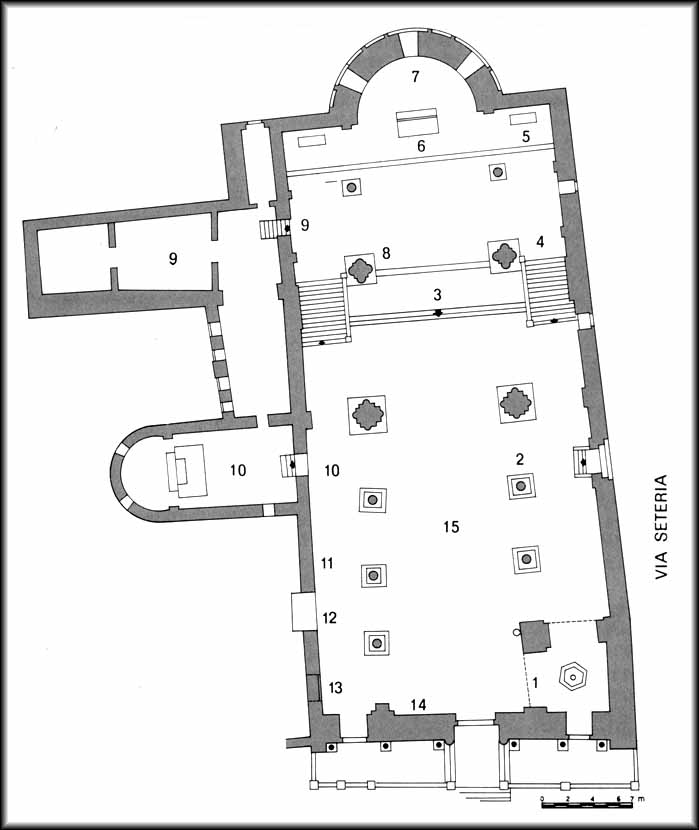Santa Maria Della Pieve on:
[Wikipedia]
[Google]
[Amazon]
Santa Maria della Pieve is a church in

The church in ''I luoghi della Fede'', ''Pieve di Santa Maria Assunta''
Regione Toscana website
Images in Flickr
{{DEFAULTSORT:Saint Maria Della Pieve Buildings and structures completed in 1330 Churches completed in the 1330s Towers completed in the 14th century Maria della Pieve Maria della Pieve Maria della Pieve 14th-century Roman Catholic church buildings in Italy
Arezzo
Arezzo ( , ; ) is a city and ''comune'' in Italy and the capital of the Province of Arezzo, province of the same name located in Tuscany. Arezzo is about southeast of Florence at an elevation of Above mean sea level, above sea level. As of 2 ...
, Tuscany
Tuscany ( ; ) is a Regions of Italy, region in central Italy with an area of about and a population of 3,660,834 inhabitants as of 2025. The capital city is Florence.
Tuscany is known for its landscapes, history, artistic legacy, and its in ...
, central Italy
Italy, officially the Italian Republic, is a country in Southern Europe, Southern and Western Europe, Western Europe. It consists of Italian Peninsula, a peninsula that extends into the Mediterranean Sea, with the Alps on its northern land b ...
.
History
The church is documented since as early as 1008, and, during the communal period of Arezzo, it was the stronghold of the city's struggle against itsbishops
A bishop is an ordained member of the clergy who is entrusted with a position of Episcopal polity, authority and oversight in a religious institution. In Christianity, bishops are normally responsible for the governance and administration of di ...
. After the latter built the nearby Cathedral
A cathedral is a church (building), church that contains the of a bishop, thus serving as the central church of a diocese, Annual conferences within Methodism, conference, or episcopate. Churches with the function of "cathedral" are usually s ...
and palace, the church, which had been already rebuilt in the 12th century, was further renovated with the façade and the apse, and the interior was remade in Gothic style (13th century).
The bell tower, finished in 1330, is in Romanesque style.

Description
The church's most striking feature is its façade, with a five-arch lower floor surmounted by threeloggia
In architecture, a loggia ( , usually , ) is a covered exterior Long gallery, gallery or corridor, often on an upper level, sometimes on the ground level of a building. The corridor is open to the elements because its outer wall is only parti ...
s, with the number of columns increasing with the elevation. The columns, and its capitals, are each different from the other (one is a statue). The original façade had no particular features, the current decoration having been added in the 12th century.
The central portal has a barrel vault
A barrel vault, also known as a tunnel vault, wagon vault or wagonhead vault, is an architectural element formed by the extrusion of a single curve (or pair of curves, in the case of a pointed barrel vault) along a given distance. The curves are ...
entrance, and a lunette with a bas-relief of the Praying Madonna with Angels. Under her is a frieze with small angels, and the signature by one Marchionne. In the vault are depictions of the Months of the school of Benedetto Antelami. The two side portals, of smaller proportions, have also decorated lunettes: they depict "Christ Baptized by John" on the right and, at the left, a vegetable motif.
The 13th century apse has also two rows of loggia which recall the façade's structure, repeating the use of different style capitals. The sides have mullioned window
A mullion is a vertical element that forms a division between units of a window or screen, or is used decoratively. It is also often used as a division between double doors. When dividing adjacent window units its primary purpose is a rigid sup ...
s.
The tall interior has a nave and two aisles, divided by longitudinal ogival arches whose columns have Corinthian capital
The Corinthian order (, ''Korinthiakós rythmós''; ) is the last developed and most ornate of the three principal classical orders of Ancient Greek architecture and Roman architecture. The other two are the Doric order, which was the earliest, ...
s. The counter-façade has nine windows on three rows. At the high altar is the Tarlati polyptych, representing the ''Madonna and Saints'', by Pietro Lorenzetti
Pietro Lorenzetti (; – 1348) or Pietro Laurati was an Italian painter, active between and 1345. Together with his younger brother Ambrogio Lorenzetti, Ambrogio, he introduced Realism (arts), naturalism into Sienese School, Sienese art. In the ...
(1320), while traces of frescoes with St. Dominic and St. Francis (attributed to Andrea di Nerlo, mid-14th century) can be seen inside the church. The crypt houses a reliquary bust of St. Donatus, executed in 1346.
The bell tower has a sturdy appearance with five rows of mullioned windows. Internally, the base houses the baptistery. The baptismal font dates to the 14th century, and has panels with ''Stories of St. John the Baptist'' by Giovanni d'Agostino (1332–1333).
External links
The church in ''I luoghi della Fede'', ''Pieve di Santa Maria Assunta''
Regione Toscana website
Images in Flickr
{{DEFAULTSORT:Saint Maria Della Pieve Buildings and structures completed in 1330 Churches completed in the 1330s Towers completed in the 14th century Maria della Pieve Maria della Pieve Maria della Pieve 14th-century Roman Catholic church buildings in Italy